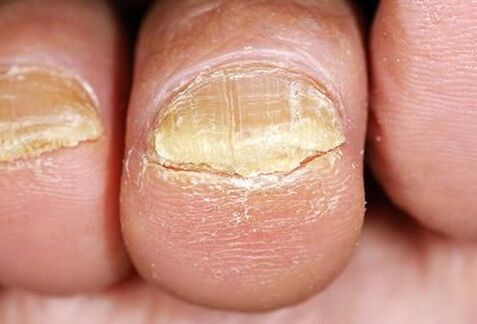
This article will talk about such an unpleasant, but, unfortunately, quite common phenomenon as nail fungus. The symptoms and causes of this disease are known to medical science and are easily diagnosed at all stages. However, it can only be detected if you pay close attention to your health. How to identify nail fungus? How to treat this? Are the advertised ointments effective?
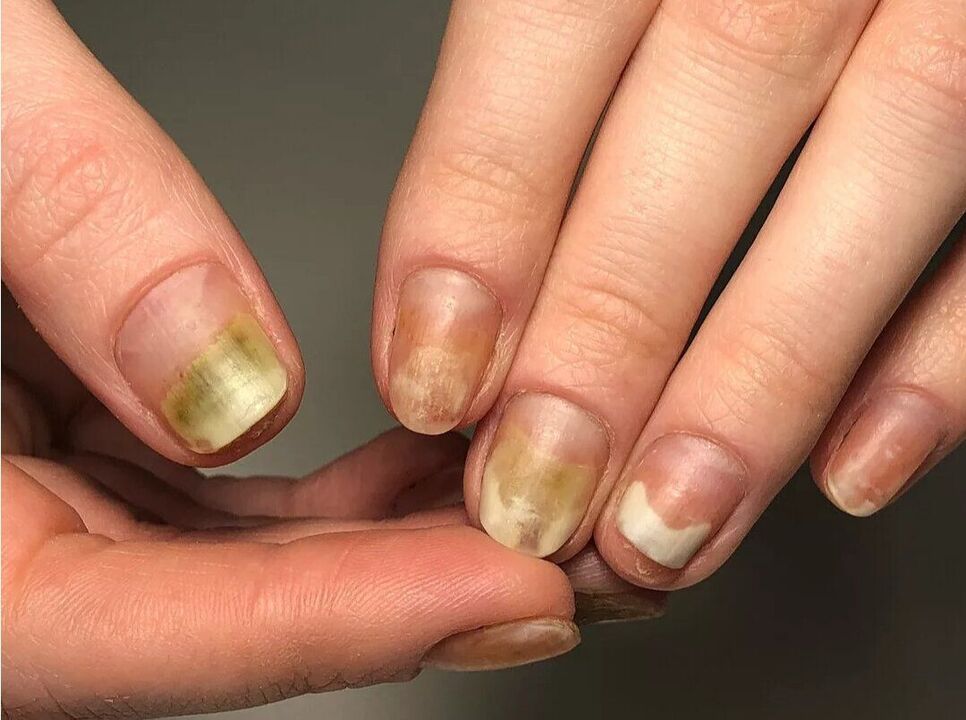
What causes nail fungus to form?
Nail fungus is a very common disease. The disease spreads with particular success in places with a temperate and tropical climate, that is, where it is humid and hot. However, paradoxically, residents of cold countries more often suffer from nail fungus. This is due to the fact that in harsh weather it is necessary to constantly wear warm shoes and socks. The foot sweats, the sock becomes wet and the person is forced to remain in this state for a long time without the opportunity to change shoes. This is the best way to promote the formation of nail fungus. Before we talk about how to identify nail fungus, let's find out who is most susceptible to this disease.
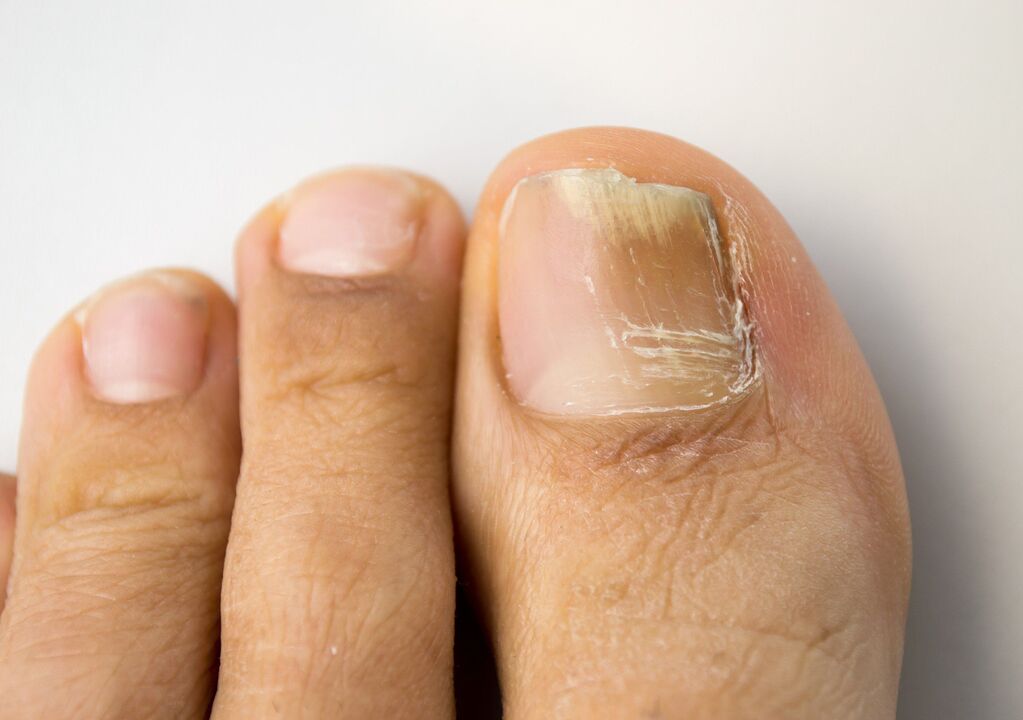
Nail fungus as an occupational disease
At risk are people whose skin on their feet cannot breathe during the day due to tight shoes. They are miners, power plant workers, gardeners and representatives of other active professions. You can "catch" the fungus while working in a laundromat, swimming pool, hotel or restaurant.
What diseases can serve as a prerequisite
Often, not only representatives of the above professions suffer from this disease, but also people who have group 1 or 2 diabetes mellitus. Also, a prerequisite for the formation of nail fungus can be deformation of the feet, varicose veins. Among the causes of this infection is insufficient nutrition of the nail due to blockage or obstruction of blood vessels. That is why the creams advertised today, as well as the nail polishes supposedly designed to save you from fungus, will be completely useless in combating the disease. After all, it is often caused by internal diseases and external influence will not eradicate the problem.
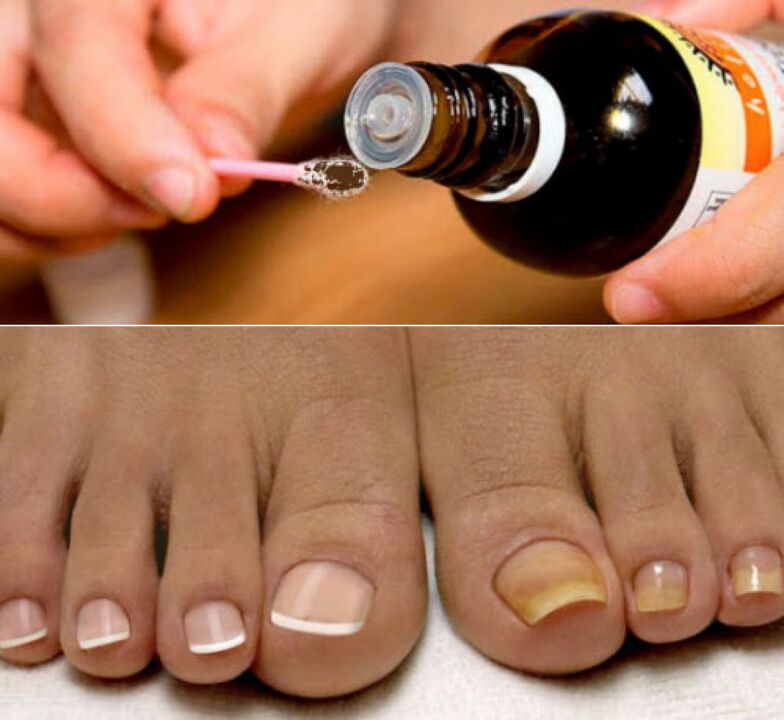
Who is at risk?
A few decades ago, nail fungus was diagnosed mainly in elderly people. However, every year the number of patients suffering from nail fungus increases and the disease itself becomes younger.
Official data suggests that nail fungus develops two to three times more frequently in men. However, it is women who turn to the dermatologist much more often with this problem. Representatives of the weaker sex are more concerned about their health and do not consider it anything shameful to consult a doctor.
Next, we will see why it is so important to get recommendations from a dermatologist about treating fungus, and we will also talk about how to identify nail fungus and what symptoms it presents at each stage of its development.

What does nail fungus look like?
This disease is not fatal, but, of course, it is necessary to get rid of it. Fortunately, it is not difficult for anyone to recognize the onset of the disease. How to identify foot fungus? Tips are provided below. First of all, take a closer look at your nails.
The first thing you should pay attention to is the color of your nails. The nail affected by the fungus becomes yellowish and opaque. Depending on the stage of the disease, the edge of the nail plate, the base or the entire nail may be affected.
Pay attention to the thickness of the nail
When answering the question of how to identify nail fungus, changes in the nail plate should also be mentioned. Despite the fact that due to the disease the nail becomes thinner, visually and in sensation it appears to become thicker and swollen.
How to identify nail fungus? To detect the presence of infection, visual examination of the nail plate is not sufficient. Mix potassium permanganate and water in a ratio of 1 to 5, dip your nails in the resulting solution for half a minute. A healthy nail will look stained and brown. Part of the affected plaque will remain white.
Stages of the disease
The disease occurs in four stages. The sooner you start treatment, the greater your chances of getting rid of nail fungus for good.
The first stage is characterized by damage to the edge of the nail. As mentioned above, the color of the plaque changes and bulges appear. The nail grows in poor quality, hollow and therefore breaks and crumbles.
A sign of the second stage will be the increase in the affected area. Additionally, it should be noted that sometimes the second stage may begin as if bypassing the first. Damage to the nail plate will not begin at the edge, but at the base of the nail. Curing nail fungus in the second stage will be more problematic than in the first.
How to identify nail fungus in the third stage? In medicine, it is called white superficial fungus and it appears that the entire plaque is affected. It has a dense white color and crumbles strongly at the edges.
The fourth stage is called total dystrophic fungus. The nail has a yellowish-gray color, emits a peculiar and unpleasant odor and is very brittle. In the fourth stage, it is often possible to see a bare part of the skin under the broken nail, as it has grown due to the fungus and in most cases breaks off.
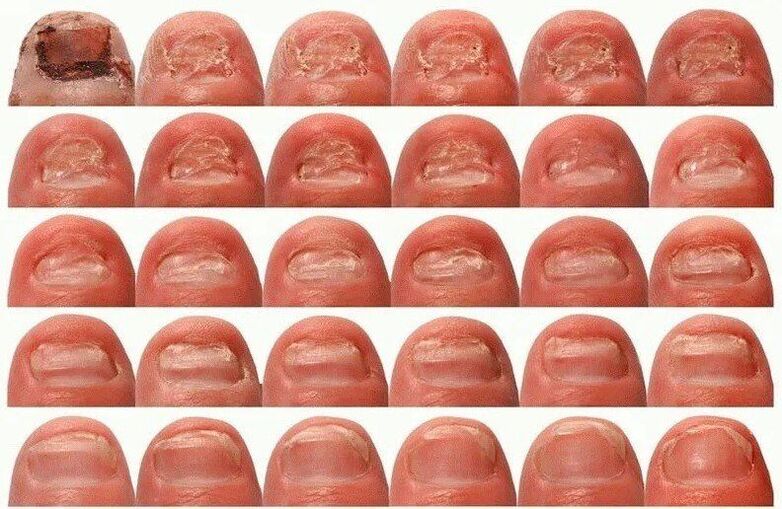
The reason for visiting a dermatologist is often to independently identify the fourth stage of nail fungus. You should not look for advice on forums or the Internet on how to effectively treat nail fungus. It is best to consult a specialist at the first symptoms of the disease.
What to expect when going to the doctor?
Probably each of us is afraid of doctors. However, don't be afraid to see a dermatologist if you suspect you have nail fungus. The specialist will perform an external examination and also scrape the upper keratinized layer of the nail to send it to the laboratory for diagnosis. A detailed analysis will reveal what caused the disease, determine the type of fungus, and also tell the doctor what type of treatment should be prescribed.
Nail fungus treatment is time-consuming. It can last from a month to three. After treatment, you will need to get tested again, even if the above symptoms are not observed.
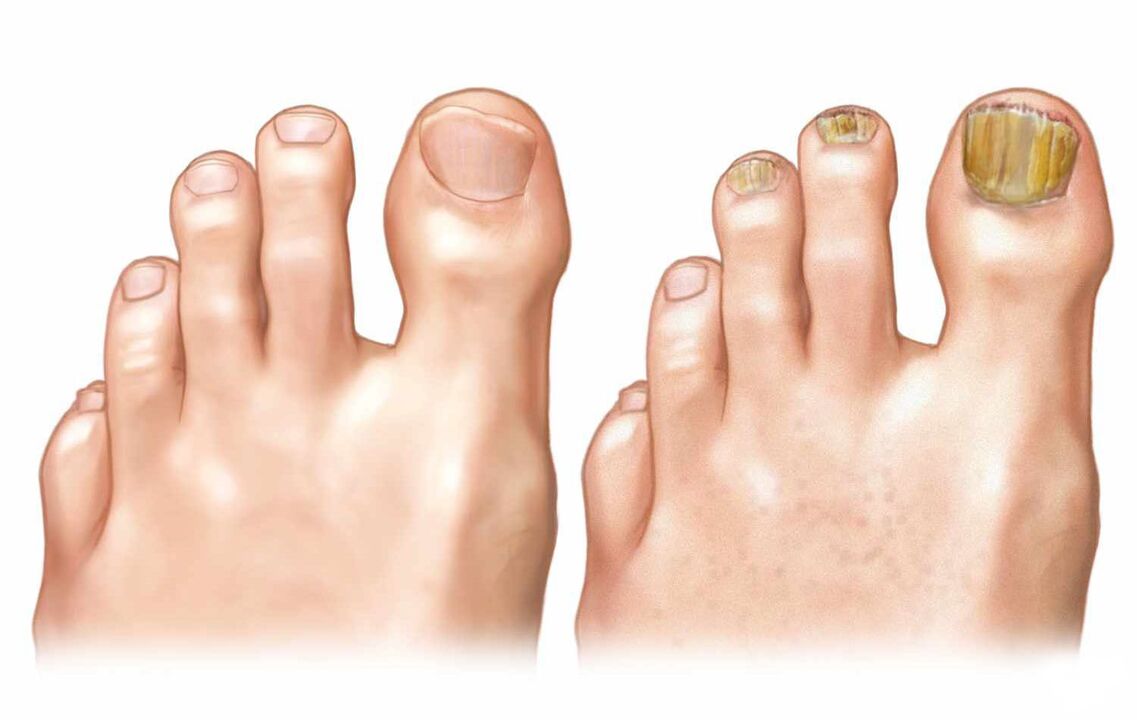
A few words about effective treatment
So, now we know how to identify toenail fungus. The methods are given above. Now it's worth saying a few words about the treatment that you can do yourself. The drug based on naftifine has proven itself very well. However, you don't need to use an ointment, but a solution. This medicine can also be used in cases of foot fungus.
How to use the solution? If you have a fungus in the first stage of the disease, lubricate the affected surface of the nail twice a day. Nails must be dry and well washed. In the next stages of the disease, you cannot do without taking pills. However, even in this case, the use of the naftifine solution should not be stopped: this will enhance the effect of the medications.
Before applying the product, the affected surface of the nail must be thoroughly cleaned with a manicure device. However, you need to be extremely careful. After completing the manipulations, it is necessary to apply a solution containing the active ingredient naftifine to the cleaned area. Repeat 2 times a day.
People familiar with this infectious disease also speak positively about kits for removing fungal nail infections. Which of these products to use, a solution or a nail removal kit, is up to you. But without the help of a dermatologist, it will not be possible to completely get rid of nail fungus.
To summarize
The article answers the question of how to identify nail fungus. However, it is worth remembering that self-medication does not always lead to complete recovery. If there are changes in the thickness or color of your nails, consult a doctor.
According to the degree of damage to the nail plate, the fungus can be divided into four stages. If at the first stage the disease does not cause alarm, as it does not deform the nail plate much, then at the fourth stage you can easily lose your nails. Don't hesitate to contact a dermatologist.
It is highly recommended not to self-medicate by succumbing to advertising exhortations about the effectiveness of a particular medicine. Cream or any other product applied externally to the nail plate will not eliminate the disease-causing agent and will therefore be ineffective. As a result, you will only delay the treatment process by masking the manifestation of the disease. It is also worth remembering that nail fungus not only looks unaesthetic, but is also a kind of beacon indicating the presence of disorders in the body.


















